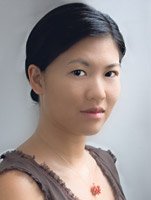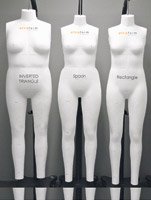Apparel Makers Size Up 3-D Dress Forms
Making the perfect dress form is coming down to an exact science. Manufacturers and retailers are doing away with traditional forms and opting for ones that are based on data captured by 3-D scanners that can replicate the human body form to near perfection.
New York–based AlvaProducts is among those leading the way with its Alva Forms. Others, like Malibu, Calif.–based Shapely Shadow and Los Angeles–based Tukatech, have also developed soft forms using laser technology.
Scanning fit models with 3-D white light technology, these companies are able to create dress forms from a standard set of data that can be used across the supply chain.
Speed-to-market is the mission behind Alva, led by CEO Janice Wang. The company recently teamed with North Carolina State University’s College of Textiles to conduct research on size and fit in order to help the industry outfit a changing demographic. What they found out was that the shape of the modern woman has drastically changed over the years.
“Most of the dress-form business was dominated by one company in the United States and one company in Europe. A lot of those forms were based on size measurements taken from a report conducted during the war [World War II],” explained Wang. “It’s different today. A metropolitan size 8 in the ’50s is more like a size 2 or 4 today,” she added.
By producing repeatable and accurate forms at competitive prices, companies can streamline their production by using basically the same forms in all their factories, said Wang.
Another change is that more women had “hourglass” figures back then. Through research with NCSU, which studied data from the 2003 Size USA survey conducted by Cary, N.C.–based research company TC2, it was determined that there are more like four dominant shapes that make up the market today—rectangular, where the bust and hips measure the same; spoon shape, where the hips are larger than the bust; inverted triangle shape, where the bust is about 3 1/2 inches larger than the hips; and the hourglass, which now constitutes only 8.4 percent of the population.
AlvaProducts is using these findings to produce its forms, but instead of relying on raw data, the company works with its clients to tweak forms to the desired shape to reflect the idiosyncrasies of a brand.
“A Hugo Boss suit for example may have a chest-up, shoulder-back posture, whereas a Versace has more rounded shoulders and is more natural,” explained Wang. “Every person who roams the earth is not symmetrical. We believe the companies themselves know who their customers are.”
Alva’s forms are made of fiberglass, ribbed cotton and linen and incorporate soft sections along with bust line, rear end and stomach to accommodate fittings. The forms use data captured by a laser scanner of a company’s fit model. The company also provides a line of basic forms for less-discerning manufacturers and a signature series of forms based on popular fit models like Maureen Gannon and John Gallagher.
The company launched in 2001 out of the Wang family’s childrenswear business in Asia.
“We saw there was a disconnect between the designers in New York and the factories in Asia. We’d create some garments that didn’t fit right but looked fine on the dress form,” she recalled.
Wang’s father is a physician, and using some of his expertise, the family decided to produce more ergonomically correct dress forms. Incorporating the Size USA data and new scanning technology led to a business that has landed accounts such as Nordstrom, Macy’s, Juicy Couture, Guess, St. John Knits, H&M, Rip Curl and more.
Now the company is working on further research with De Montfort Universityin the United Kingdom to help improve fit for intimate apparel. The company has also developed products for areas such as visualization during the pre-production process.
“It’s important for apparel companies to embrace new technology but to be practical about it. This is new technology for an old-fashioned way of doing business,” concluded Wang.
























